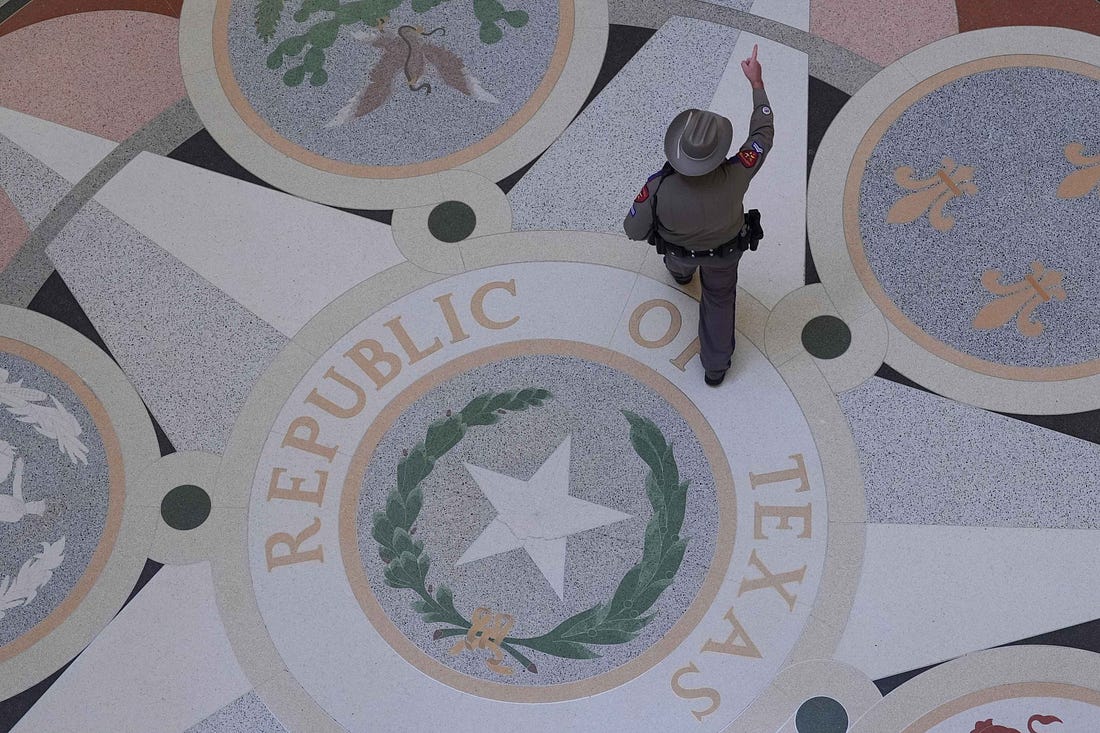| Forwarded this email? Subscribe for more |
 |
| By The Free Press |
Instagram Teen Accounts default teens into automatic protections for who can contact them and the content they can see. |
It’s Thursday, November 20. This is The Front Page, your daily window into the world of The Free Press—and our take on the world at large. Today: A fresh take on George Orwell, Jed Rubenfeld on the perils of gerrymandering, Freya India on why “stay single” is terrible advice, and much more.
But first: Can Democrats keep their momentum?
And just like that, it’s good to be a Democrat again. Sure, Senate Minority Leader Chuck Schumer’s decision to shut down the government backfired on him. But looking forward to next year’s midterms, the Democrats appear to have the wind at their backs: According to one new poll, if they had to choose today between a Republican or a Democrat to represent them in Congress, 55 percent of Americans say they would go for the Democrat, while just 41 percent say they will support the Republican.
The last time Democrats saw numbers this good was in 2017, just before they walloped Republicans in the 2018 midterms and picked up 41 seats in the House. Meanwhile, President Donald Trump is increasingly unpopular, with an approval rating dipping into the 30s, and the right is engaged in a low-grade civil war over what the GOP should look like once Trump is gone.
Take a closer look, though, and the picture gets a little more complicated—with the Democrats still in search of answers to the big questions about the future of their party.
You can see that dynamic in New York where, as Olivia Reingold reports, mayor-elect Zohran Mamdani could be on a collision course with the Democratic Socialists of America, who helped get him elected.
Mamdani has tacked ever so slightly to the center since his election earlier this month—for example, he’s keeping his predecessor’s tough-on-crime NYPD commissioner, Jessica Tisch. And already the DSA is strategizing over how to hold his feet to the fire. Olivia has the details of those plans in her report today.
Another sign of the Democratic Party’s fault lines is in the gap between the rhetoric and actions of some of their most prominent midterm candidates. Candidates like Georgia senator Jon Ossoff. In recent months, Ossoff has taken a populist stance against billionaire and corporate interests who he says “manipulate elections” through donations. There’s just one problem: As Gabe Kaminsky reports, Ossoff himself is funding his campaign with money from exactly those sources.
“The contradiction between Ossoff’s rhetoric and the sources of his cash are a reflection of the Democrats’ post-2024 identity crisis,” writes Gabe. “The party is caught between the elites who helped fund Kamala Harris’s $1.5 billion campaign, and progressive populists like Bernie Sanders and Zohran Mamdani who want to steer the party further to the left.”
Read his report on the Democrats who attack billionaires—but take their money.
As for where the party goes from here, Richard D. Kahlenberg and Ruy Teixeira say Democrats should look to the past, specifically Bobby Kennedy’s 1968 presidential run. Kennedy was born 100 years ago today and, although an assassin’s bullet ended his White House bid, RFK was able to create a remarkable coalition by leaning heavily into patriotism. If Democrats study and absorb the lessons from his political playbook, Kahlenberg and Teixeira write, they have a better chance of winning over the minority and working-class voters who voted for Trump. Read their piece here.
—Will Rahn





